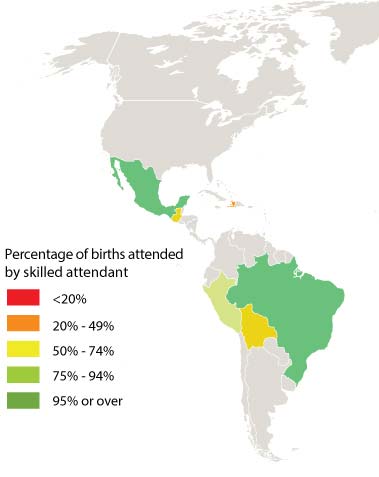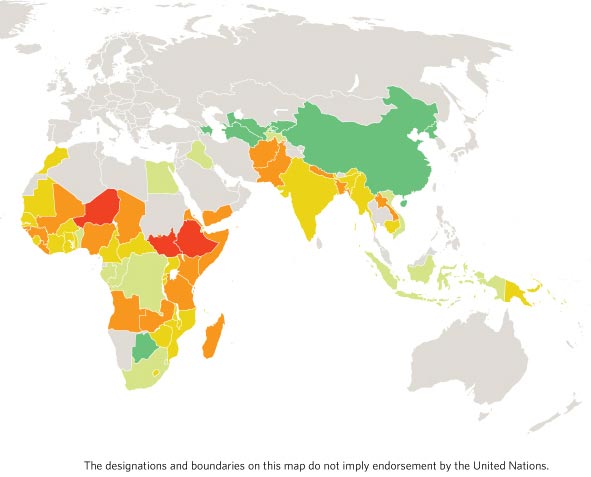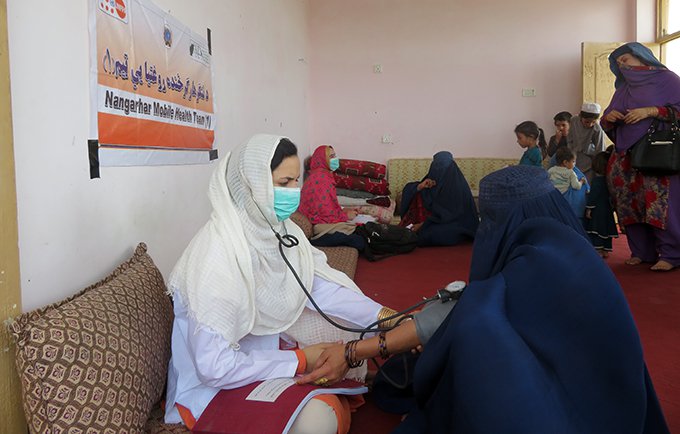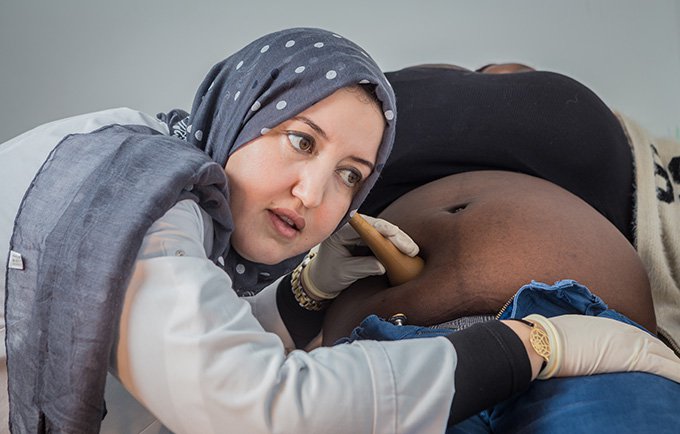Why are midwives needed?
The world has seen a steady decline in maternal and newborn deaths since 1990. Yet hundreds of thousands of women and newborns continue to die each year during pregnancy and childbirth. An estimated 303,000 women and about 2.7 million newborn babies died in 2015 alone. The vast majority lost their lives to complications and illnesses that could have been prevented with proper antenatal, delivery and post-natal care – services provided by midwives.
In 2013,
nine interactive midwifery e-learning modules were developed by UNFPA, Jhpiego and Intel, with endorsement from the International Federation of Gynecology and Obstetrics, the International Confederation of Midwives (ICM), the International Council of Nurses and WHO.
A module on preventing FGM was launched in 2015. Over 7,000 midwives been trained through these modules, which can be accessed anywhere, for free. Several hospitals in Kenya referred to them as “the best innovation [in maternal health] so far,” and more than 80 per cent of learners in India rated the content 10 out of 10.
The World Health Organization (WHO) advocates for “skilled care at every birth” by an accredited health professional, such as a midwife, doctor or nurse who has been trained to manage uncomplicated pregnancies, deliveries and the immediate post-natal period. Skilled birth attendants also need to be able to identify complications and obtain timely emergency assistance. Midwives provide all these services, and more.
Yet they do not just deliver babies. They also provide comprehensive sexual and reproductive health services, and play a critical role in promoting health within their communities. As members of their communities, they are also able to provide culturally sensitive care that is more likely to have a lasting impact.
What midwives do
Midwives – and people with midwifery skills – are the main caregivers for women and their newborns during pregnancy, labour, childbirth and in the post-delivery period. A well-trained midwife can provide comprehensive sexual and reproductive health information and services, including antenatal care, safe delivery care, and post-partum/post-natal care.
Midwives also provide family planning counselling and services, and they can perform breast and cervical cancer screenings. If authorized by their countries, they can perform basic emergency obstetric care, and in humanitarian crises, midwives can help implement the Minimum Initial Services Package for reproductive health care services.
Midwives also do much to advance women’s and girls’ rights. By providing information and counselling, they can help prevent female genital mutilation (FGM); they can offer support and assistance to survivors of gender-based violence; and they can provide reproductive health services to adolescents, who are often denied access to these services at great cost to their health and rights.
Seventy-three countries have 96% of the world's maternal deaths, but only 42% of the world's midwives, nurses and doctors.


The midwife shortage
In 2016, UNFPA, in collaboration with the ICM, WHO, Jhpiego and others, identified and trained 30 young midwifery leaders. They have since been working tirelessly to raise the voices of midwives and engage on health policy.
Midwives, when properly trained and supported, offer one of the most cost-effective and culturally sensitive paths to achieving universal health care. Yet midwives are in short supply in many developing countries, and they often lack the skills and supportive environment to perform their jobs well. The deficits are highest in the areas where needs are greatest.
There are many challenges to increasing the availability of midwifery services. Despite the enormous responsibilities they bear, midwives – who are overwhelmingly women – frequently endure poor pay, low status and a lack of support. Gender biases often play a role in the problems midwives experience.
What is UNFPA doing?
Between April and December 2016, over 3,000 people were trained in pregnancy health and midwifery skills through a portable Mobile Learning System. Designed for remote, low-resource areas with poor infrastructure, the system includes a portable, battery-operated projector, built-in Android tablet, solar charger and speakers. Each projector is pre-loaded with midwifery training materials.
UNFPA, together with over 40 global partners and over 300 national partners, works to scale up quality midwifery education, policies and services around the world. UNFPA and its partners also work to strengthen midwifery training curricula, institutions, associations and regulations. UNFPA’s support for midwifery now spans over 120 countries, including the 39 countries with the highest rates of maternal mortality, which receive targeted support through the Maternal Health Thematic Fund.
Between 2009 and 2018, UNFPA has helped train over 105,000 midwives; provided books, equipment and training materials to over 650 midwifery schools; trained over 8,500 midwifery tutors; and supported over 250 national and sub-national midwifery associations and their branches. UNFPA also works closely with national governments to ensure that midwifery is a well-regulated, autonomous profession with midwives enjoying a clear title and properly defined scope of practice. Over 80 countries now follow a competency-based midwifery curriculum that is based on global standards. In addition, UNFPA has been supporting higher education programmes for midwives. Bachelor’s degree programmes have been launched in Afghanistan, Cambodia, Ghana, Haiti, the Lao People's Democratic Republic, Pakistan, Somalia and Zambia, and midwifery master’s degree programmes have been introduced in Bangladesh, Benin, Burkina Faso, Ethiopia, Nigeria, Uganda and Zambia.
UNFPA finalized a new global midwifery strategy in 2017. It calls for: education to ensure competent, well-trained midwives and faculty; regulation to ensure midwives can provide quality care and are accountable and autonomous; strong, fully functional associations that advocate for the profession; workforce policies to increase midwifery recruitment, deployment and retention; enabling environments to ensure that legal and policy frameworks empower midwives to provide respectful care; and recognition that midwifery is central to sexual, reproductive, maternal, neonatal and adolescent health.
UNFPA also focuses on deploying midwives following the completion of their education and training. For example, in Ethiopia, UNFPA recently supported the deployment of over 4,400 midwives.
Today, support for midwifery services is growing. Midwifery is strongly emphasized in the UN Secretary-General’s Global Strategy for Women’s Children’s and Adolescent’s Health and the Africa Health Strategy, and an increasing number of governments have committed to investing in midwifery care. Each year, UNFPA works with ministries of health and national midwifery associations to celebrate the International Day of the Midwife on 5 May, highlighting the importance of midwives everywhere.
The State of the World’s Midwifery
In 2011, UNFPA and 30 partners published the first-ever State of the World’s Midwifery report, with data from 58 developing countries. The report called for bold initiatives by governments, regulatory bodies, training institutions and others to scale up investments in midwifery services. The second State of the World’s Midwifery was published in June 2014. It offers data from 73 low- and middle- income countries, and highlights the acute shortage of midwives in the places where there the needs are greatest.
Updated 10 August 2018.












